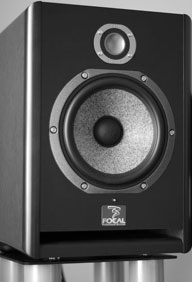Mastering in more Detail:
 Mastering
is the last creative process in the music
production chain. Mastering can add clarity, punch and body to a mix.
Common tools used in mastering are: equalization, compression,
expansion, image tools and limiting.
Mastering
is the last creative process in the music
production chain. Mastering can add clarity, punch and body to a mix.
Common tools used in mastering are: equalization, compression,
expansion, image tools and limiting.
Most importantly though it is about listening to each track and
applying the correct process needed for that particular track, not
about applying the same default setting for all.
The Mastering
Engineer therefore may choose to use one or all of the above tools to
get the track sounding as good as it can.
The mastering process also helps your music translate well to the
outside world, i.e. it should allow your tracks to sound good on as
many different sound systems as possible - ipods and desktop
speakers, home hi-fi systems, car stereos, Radio / TV transmissions and
club sound systems.
Mastering is also the last chance to repair any problems that occured
in the recording process, ie click/glitch removal, de-essing and noise
reduction etc.
It is also useful as it allows you to get an unbiased perspective on
your tracks, as sometimes when mixing for days on end you are so
'close' to the mix that it becomes hard to hear the mix as a whole.
Another aspect of mastering is the actual compilation of the CD master.
Not only do the tracks need to sound great individually, but the album
needs to 'flow' nicely from one track to the next in terms of both
overall tone and level.
A
Small
note on Loudness:
If you want your music very loud I can provide this, but bear in mind
that by doing this you are limiting the dynamic range and punch of the
tracks.
It also
may become tiring to listen to after a while, and may produce nasty
artifacts if later followed by more compression ie radio transmission
or lossy encoding (mp3).
Learn more about The loudness War:
Ian Shepherd - Dynamic Range Day - The Loudness War
Wikipedia - The Loudness war
